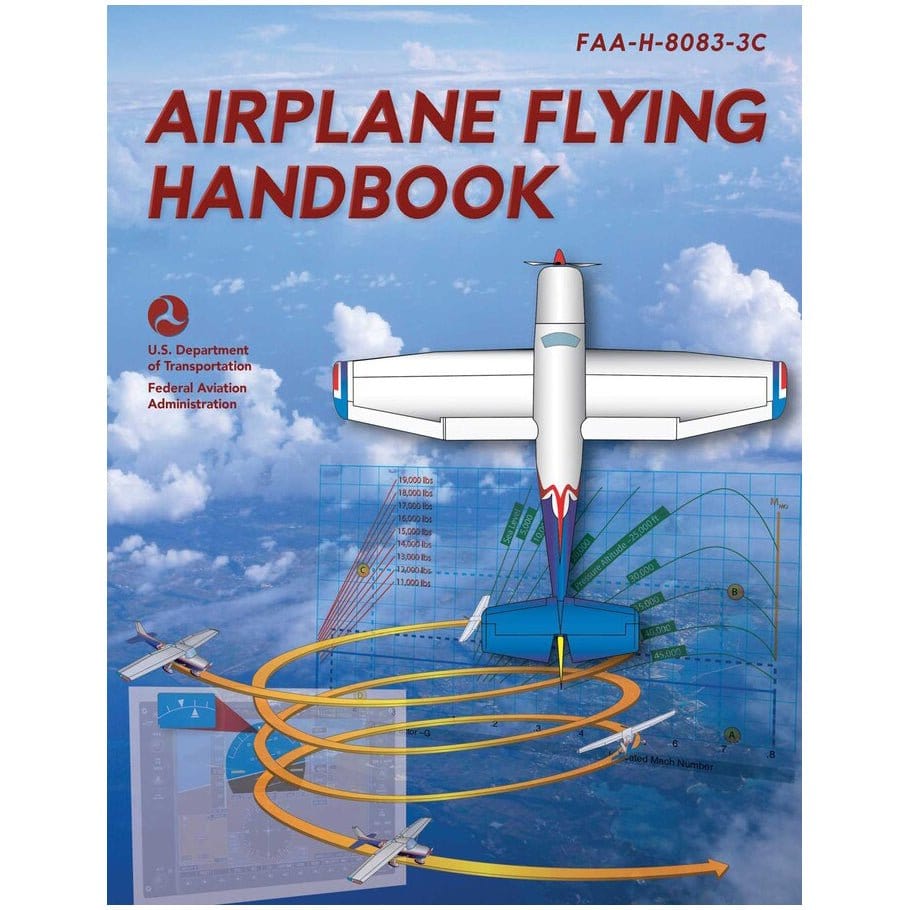General aviation pilots are no strangers to change, but 2025 brings a unique mix of challenges and opportunities. From fluctuating fuel prices and new airspace restrictions to supply chain bottlenecks and emerging digital threats, knowing what’s on the horizon can help you keep flying safely and affordably—no matter what the headlines say. The global landscape is more complex than ever, with geopolitical tensions, economic fluctuations, and regulatory changes creating new obstacles (and some silver linings) for private pilots, flight instructors, and aircraft owners alike.
In this comprehensive guide, we’ll break down the key factors affecting general aviation in 2025 and offer practical tips to adapt. Whether you’re managing aircraft ownership costs, planning cross-border flights, or looking to save on fuel and maintenance, staying ahead of these trends will make all the difference in your flying journey.
Table of Contents
- The 2025 General Aviation Landscape: Trends and Outlook
- Geopolitical Factors Affecting General Aviation Operations
- Economic Pressures on General Aviation
- Regulatory and Policy Changes to Watch in 2025
- Supply Chain Disruptions and Maintenance Delays
- Cybersecurity in the Digital Cockpit
- Opportunities and Adaptation Strategies for GA Pilots
- Practical Tips for General Aviation Pilots
- Actionable Checklist for 2025
- Frequently Asked Questions
- Conclusion: Community Resilience and Adaptation
The 2025 General Aviation Landscape: Trends and Outlook
General aviation (GA) entering 2025 is marked by strong activity but also heightened uncertainty. On the positive side, the GA sector has been growing in many areas. According to the General Aviation Manufacturers Association (GAMA), manufacturers enjoyed another robust year in 2024 – worldwide GA aircraft shipments topped 4,000 units for the second year in a row, with total billings exceeding $30 billion. This continued growth indicates healthy demand for private flying, flight training, and recreational aviation.
Another encouraging trend is the surge in pilot training. The Federal Aviation Administration (FAA) reported 69,503 student pilot certificates issued in 2023 – a 24% jump from the prior year. This is the largest annual increase in over a decade, meaning thousands of new pilots are entering the pipeline. The post-pandemic pilot shortage in commercial aviation is driving this boom, creating abundant opportunities for certified flight instructors (CFIs).
"We are launching the National Pause for General Aviation Safety now so that we can draw attention to our successes and also refocus our efforts on making general aviation even safer," said AOPA President Darren Pleasance in a recent statement, reflecting the industry's focus on proactive measures amidst growth.
Yet, this optimistic outlook comes with caveats. Industry leaders caution that sustaining GA’s momentum will require navigating serious headwinds. Key uncertainties in 2025’s GA landscape include volatile fuel costs, new environmental rules, lingering supply-chain bottlenecks, and the rising importance of digital security.
Geopolitical Factors Affecting General Aviation Operations
Global events and geopolitical tensions have a way of reaching even the local airfield. In 2025, these risks primarily center on airspace access, international travel rules, and the indirect effects of conflicts on aviation resources.
- Airspace Restrictions and Conflict Zones: Ongoing conflicts lead to sudden airspace restrictions. The FAA continues to prohibit U.S. civil flight operations in several conflict zone airspaces for safety. Pilots planning transoceanic or cross-continental flights in 2025 must review the latest international NOTAMs and FAA advisories to avoid wandering into restricted skies.
- Cross-Border Flying Challenges: International travel brings new bureaucratic hoops. The United Kingdom now requires an Electronic Travel Authorisation (ETA) for U.S. visitors arriving after January 8, 2025. Similarly, the European Union is expected to implement its ETIAS system by mid-2025, obligating Americans to apply online for approval before flying to Europe. These add an extra pre-trip step and fee for pilots planning hops across the pond.
- Sanctions and Their Ripple Effects: Geopolitical strife often leads to economic sanctions that indirectly affect GA. For example, sanctions on key commodity producers can disrupt the supply of materials like titanium used in aircraft parts. These ripple effects mean maintenance shops might face longer lead times or higher prices for globally sourced components.
Economic Pressures on General Aviation
If geopolitics determines where we can fly, economics often determines how much. In 2025, rising costs across the board are squeezing GA budgets.
- Soaring Fuel Prices: Fuel remains the single largest variable cost. With 100LL avgas averaging over $6.00 per gallon, the cost to operate popular aircraft has risen sharply. A four-hour cross-country flight in a Cessna 172, burning 8-9 gallons per hour, now costs $30-$40 more in fuel alone compared to just a few years ago. For owners of higher-performance aircraft like a Cirrus SR22, which can burn 13-15 GPH, the impact is even more significant.
- Higher Ownership Costs (Insurance, Hangars): Owning an aircraft has become more expensive. Aircraft insurance premiums surged dramatically over the past five years, with some owners seeing double-digit annual hikes. While the market is stabilizing, high rates persist. Hangar and tie-down fees are also climbing, reflecting broader real estate inflation.
- General Inflation and Interest Rates: The high inflation of recent years raised prices on everything from oil and tires to avionics and headsets. Furthermore, higher interest rates make financing an aircraft purchase or major upgrade significantly more costly than in the past.
- The Used Aircraft Market: After a period of record-high valuations, the used aircraft market is leveling off. Prices have stabilized and in some cases softened slightly from their peak. This is good news for buyers, but it means the market is less of a sure bet for sellers who purchased at the peak.
Regulatory and Policy Changes to Watch in 2025
Staying up-to-date with FAA rules is critical. Several key developments are impacting GA pilots this year.
- FAA Reauthorization and Expanded BasicMed: A major win for GA, the FAA Reauthorization Act of 2024 directed the FAA to expand BasicMed. Pilots using this alternative medical certification can now fly aircraft up to 12,500 lbs (from 6,000 lbs) and with up to six passengers. This opens up a wider range of aircraft, including many light turboprops and twins, to nearly 80,000 pilots.
- Transition to Unleaded Fuel: The move away from 100LL avgas is the biggest looming regulatory shift. The industry’s EAGLE initiative aims for a full transition by 2030. While unleaded fuels like GAMI’s G100UL are approved, distribution remains limited. In a key 2025 ruling, the FAA determined that airports receiving federal funds cannot unilaterally ban 100LL until a viable, fleet-wide replacement is widely available. Still, the days of leaded avgas are numbered.
- Training Rule Relief: The burdensome LODA (Letter of Deviation Authority) requirement for flight training in personal experimental aircraft was eliminated. Owners of experimental, kit, or warbird aircraft can now receive instruction in their own planes without needing special FAA permission, removing a significant barrier to safety and training.
Supply Chain Disruptions and Maintenance Delays
The supply chain disruptions that began during the pandemic have not fully resolved for aviation, creating practical consequences for maintenance schedules and costs.
- Parts Availability: An FAA aerospace forecast noted that near-term growth may be "offset partially by supply chain constraints, most notably aircraft deliveries." Many maintenance shops in 2025 still report prolonged lead times of 3-6 months for certain avionics components and engine parts. A simple magneto for a Piper Archer or a specific avionics unit for a glass-cockpit upgrade can now mean months of downtime.
- Planning Ahead is Crucial: Savvy pilots and owners must plan well in advance, ordering critical parts for an annual inspection months ahead of time. Don't wait until the last minute to source a component, as you may face costly delays or expedited shipping fees.
- New Aircraft Delays: For those in the market for a new plane, delivery schedules have been stretched out as manufacturers contend with lingering shortages. This makes considering a well-maintained used aircraft or fractional ownership a practical alternative for those needing an aircraft sooner.
Cybersecurity in the Digital Cockpit
As cockpits become increasingly connected, cybersecurity has emerged as a new and critical area of vigilance for every pilot.
- Avionics Vulnerability: The advanced avionics suites in modern aircraft, often connected to the internet for database updates or to personal electronic devices via Bluetooth, can be potential targets for malicious actors. Pilots should ensure they are diligently applying all software and firmware updates provided by manufacturers to patch vulnerabilities.
- Data Privacy on Personal Devices: The use of tablets and smartphones for electronic flight bags (EFBs) and flight planning is universal. However, accessing sensitive aviation data or connecting to your aircraft's systems over unsecured public Wi-Fi networks (e.g., at an FBO or coffee shop) can expose your information. Always use a secure, private network or a personal hotspot.
- Staying Informed: The FAA occasionally issues cybersecurity advisories. Following best practices from both the FAA and your avionics manufacturers is the best defense to prevent digital disruptions and ensure the integrity of your navigation and flight data.
Opportunities and Adaptation Strategies for GA Pilots
It’s not all challenges. 2025 also brings opportunities for those in general aviation who adapt creatively.
- Thriving Training and Career Paths: The airline pilot shortage has created unprecedented demand for flight instructors. For experienced pilots, instructing can be a rewarding way to give back and offset flying costs. Other GA careers like banner towing, aerial survey, and ferry flying are also in high demand.
- Shared Ownership and Flying Clubs: In response to rising costs, shared ownership models are booming. Flying clubs, fractional ownership programs, and co-ownership partnerships drastically reduce the financial burden by spreading out fixed costs like insurance, hangar fees, and maintenance.
- Embracing New Technology: Technological innovation offers pathways to efficiency. Upgrading to a modern engine monitor can help optimize fuel burn. For some, STCs for diesel (Jet-A) or mogas-capable engines can yield long-term savings. And while still nascent, electric aircraft are demonstrating extremely low operating costs for training and local flights.
Practical Tips for General Aviation Pilots
Let’s get down to actionable advice. Here is what you can do to navigate 2025:
- Stay Informed with Quality Information: Subscribe to publications from the AOPA, EAA, and other aviation news outlets. Regularly check FAA NOTAMs for airspace changes, especially before international flights.
- Budget and Plan Financially: Revisit your flying budget to account for higher costs. Use fuel price apps (e.g., ForeFlight, AirNav) to find the cheapest fuel stops. Shop around for insurance annually and establish a dedicated maintenance reserve fund.
- Improve Fuel Efficiency in Flight: Fly at more efficient altitudes, lean aggressively where appropriate, and use flight planning tools to take advantage of favorable winds. Small adjustments can save a gallon or two per hour.
- Prepare Meticulously for International Flights: Verify passport validity and apply for required authorizations like the UK’s ETA or the EU's ETIAS well in advance. Ensure your aircraft has a valid CBP decal, and you are proficient with filing eAPIS manifests.
- Leverage Community Resources: Tap into pilot forums and local EAA or AOPA chapters for collective wisdom. Learning from others' experiences with maintenance, insurance, or fuel-saving techniques can save you time and money.
- Safety First, Always: Never let economic pressure degrade your safety standards. Do not skimp on required maintenance or stretch fuel reserves. Manage stress and use the IMSAFE checklist before every flight. Airmanship means adapting your operations to remain safe in uncertain times.
Actionable Checklist for 2025
- Regularly review FAA NOTAMs, especially before international flights.
- Conduct annual insurance and financing reviews to ensure competitive rates.
- Budget proactively for maintenance, fuel, and inflation-driven expenses.
- Implement rigorous cybersecurity practices for all connected avionics and personal devices.
- Plan international flights carefully, applying for new travel authorizations well in advance.
- Engage with advocacy groups (AOPA, EAA) to support a smooth transition to unleaded fuel.
Frequently Asked Questions
Q: How are global geopolitical events affecting general aviation in 2025?
A: Primarily through airspace restrictions (TFRs, no-fly zones), supply chain disruptions for aircraft parts, higher insurance premiums reflecting global risk, and new electronic travel authorization requirements for international flights to regions like the UK and EU.
Q: Are general aviation fuel prices going up in 2025, and what can pilots do about it?
A: Prices for 100LL and Jet-A remain elevated compared to historical averages. While major spikes are not currently forecasted, volatility remains a risk. Pilots can mitigate this by using fuel-price tracking apps, planning fuel-efficient routes, flying at economy cruise settings, and joining fuel discount programs.
Q: What new regulations should GA pilots be aware of in 2025?
A: The most significant changes include the expansion of BasicMed privileges to larger aircraft (up to 12,500 lbs and 6 passengers), the elimination of the LODA requirement for training in one's own experimental aircraft, and the ongoing policy developments surrounding the transition to unleaded avgas by 2030.
Q: What cybersecurity practices are essential for GA pilots?
A: Key practices include keeping avionics software and firmware updated, using secure Wi-Fi networks for flight planning and data transfers, being wary of phishing attempts, and following cybersecurity guidelines issued by the FAA and avionics manufacturers.
Q: Is general aviation growing or declining in 2025?
A: Despite challenges, GA is showing robust growth in key areas. Aircraft sales are strong, and according to the FAA, student pilot certificates surged 24% in the last full reporting year. While high costs are a headwind, interest in private and business aviation remains high, and the community is adapting through models like flying clubs and fractional ownership.
Conclusion: Community Resilience and Adaptation
Adaptability and community are the twin themes for general aviation in 2025. By staying informed about global events, economic trends, and regulatory changes, you position yourself to make savvy decisions.
Through it all, remember that general aviation has weathered many storms. What carries it through is the passion and resourcefulness of its community. We share tips, mentor the next generation, and advocate with one voice for our freedom to fly. As a GA pilot in 2025, you can thrive by being proactive, flexible, and leaning on your fellow aviators for support and advice.
Join the Conversation!
How are you navigating these challenges? Have you found a clever way to save on fuel or deal with a parts delay? Share your experiences and tips in our community forums. Your insights could help a fellow pilot keep their wings level in these uncertain times.
Ultimately, the spirit of general aviation is defined by individual freedom coupled with collective responsibility. If we all stay adaptable and support each other, we’ll not only navigate these uncertain times—we’ll chart new heights.
Blue skies and tailwinds!






